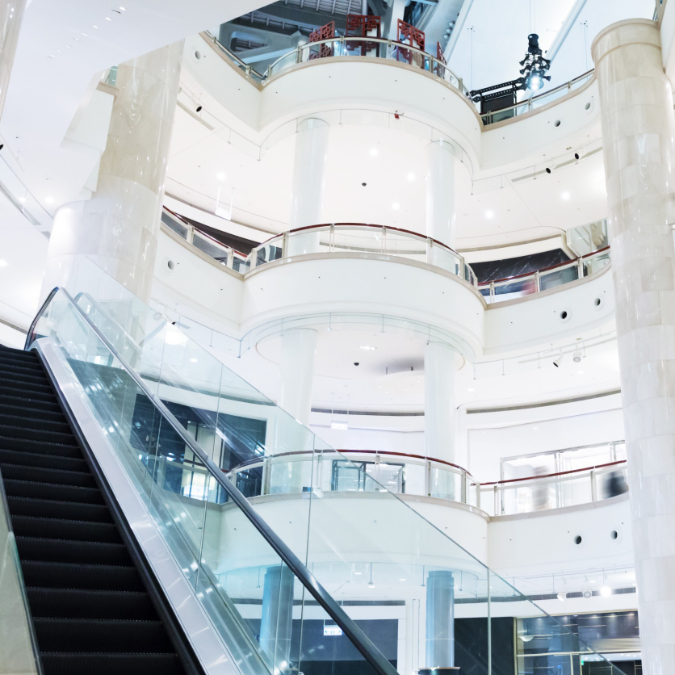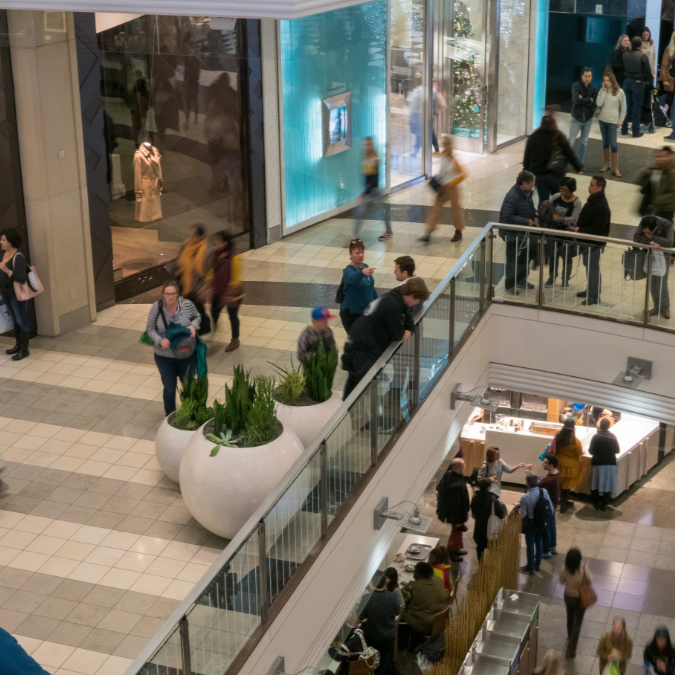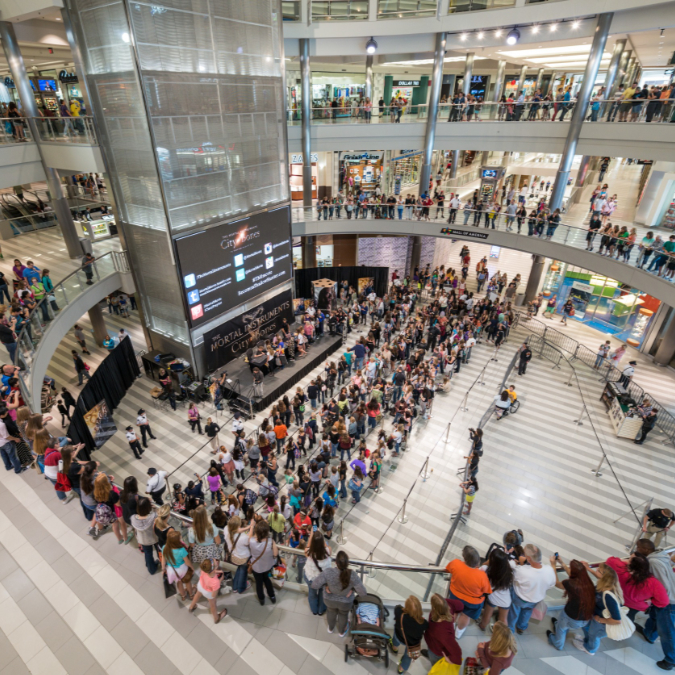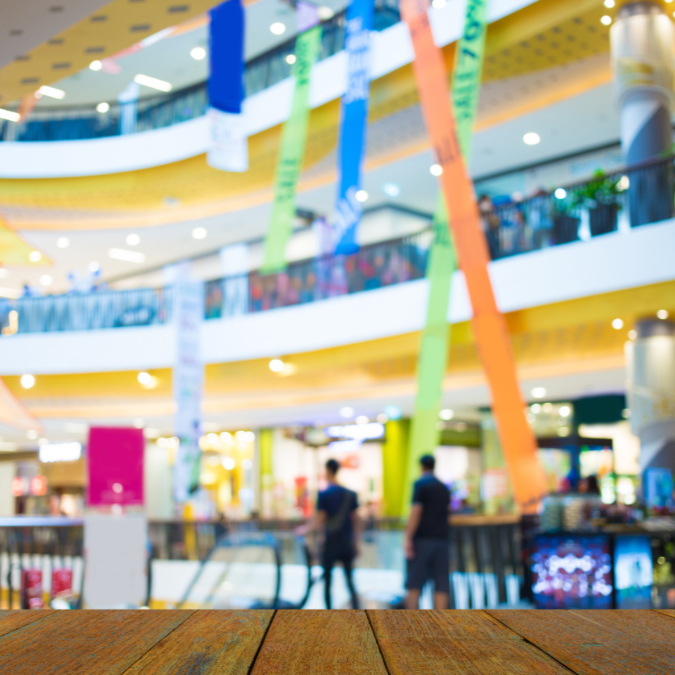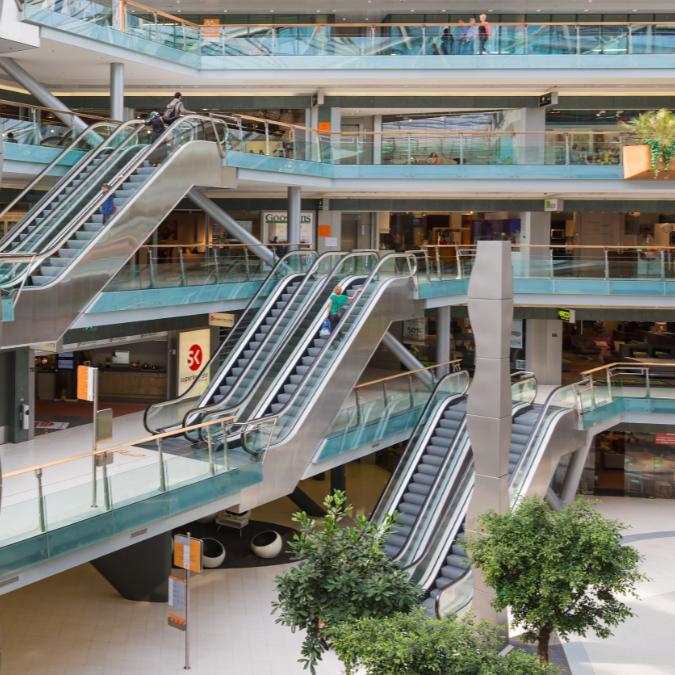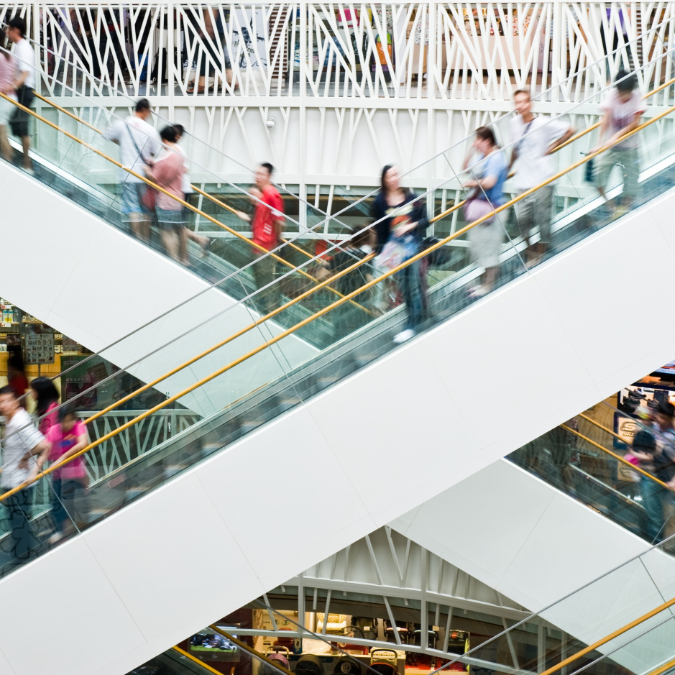Abandoned malls used to be a gathering place for the whole community to mill about, socialize, and shop. But the rise of online shopping has turned these formerly bustling meeting places into vacant structures. Luckily many communities are finding ways to repurpose these vast, empty shopping centers to breathe new life into them. From mixed-use developments to educational facilities, here are 14 clever ways abandoned malls are being revitalized.
1. Mixed-Use Developments
Many abandoned malls are being transformed into mixed-use developments, incorporating apartments, offices, and retail spaces. This strategy creates vibrant new communities where people can live, work, and shop all in one place.
Many malls have closed due to lack of foot traffic, but mixed-use developments benefit from having a built-in customer base.The residents and employees who live and work there provide a steady stream of foot traffic and monetary flow to the retail stores, nearly ensuring their success.
2. Educational Facilities
Some abandoned malls are being converted into educational institutions such as community colleges or vocational training centers. These former retail spaces offer ample room for classrooms, labs, and administrative offices.
Another benefit of revitalizing malls into educational institutions is that they’re usually centrally located, making them easy for off-campus students to get to. Malls are often on the bus line, allowing students without cars to commute to class.
3. Entertainment Centers
Although many abandoned malls had a movie theater or arcade, developers are taking things a step further and revamping these vacant shopping centers into entertainment hubs. They’re replacing empty retail space with theaters, arcades, bowling alleys, and even sports facilities like basketball courts. These improvements help draw in foot traffic, especially families who are looking for fun activities to enjoy on the weekends.
According to Sports Facilities, the former Red Roof Mall in Branson, Missouri was successfully turned into a youth sports complex. It features on-site dormitories for visiting teams, several baseball fields, concessions and restaurants, and more.
4. Healthcare Facilities
Some malls are being repurposed into healthcare centers, accommodating medical offices, clinics, and wellness facilities. This adaptive reuse of space provides convenient access to healthcare services and contributes to the revitalization of surrounding areas.
The sprawling square footage of malls can accommodate many different practices, allowing patients to get much of the care they need under one roof. Imagine how convenient it would be to visit your ophthalmologist and primary care doctor at the same facility on the same day! The ample parking would also make it easy to snag a spot, a common problem at hospitals.
5. Tech Hubs
Former retail spaces are also being transformed into tech hubs. They’re housing startups, coworking spaces, and even established tech companies. For example, Google has renovated two former malls in California into offices using green building techniques. These redevelopments foster collaboration and attract tech talent and investment to the area, benefiting the surrounding community.
6. Indoor Farms
Believe it or not, urban farmers are repurposing malls into indoor growing facilities. They’re utilizing the vast former retail spaces to grow fruits, veggies, and herbs hydroponically or aeroponically. This sustainable approach to farming provides fresh produce year-round, increasing the local community’s access to healthy food. The roof of Dizengoff Center shopping mall in Tel Aviv was transformed into a hothouse to deliver farm-fresh veggies to nearby restaurants and residents.
7. Art Galleries and Studios
Malls have white walls and vast expanses of open space, just like art museums and galleries. So it makes sense that they’d be turned into creative havens, featuring art galleries, studios, and performance spaces. Workshops and shows help attract artists and art enthusiasts alike.
These redevelopments foster artistic expression and add cultural vibrancy to the surrounding community. For instance, the abandoned Peace Centre in Singapore was transformed into a pop-up art exhibit for several months before its scheduled demolition. It featured a unique mix of graffiti installations, musical performances, thrift shops, and art tours and workshops.
8. Senior Living Communities
Another option for redevelopment is to turn abandoned malls into senior living communities. They offer an ample amount of square footage, easily acommodating housing, healthcare services, and amenities like a fitness center and library all under one roof. For example, Passero Associates turned a mall in Irondequoit, New York into 55+ apartments. The former retail structure was able to accommodate lots of community spaces for seniors to enjoy, such as a community garden, fitness center, courtyard, and more.
9. Data Centers
Abandoned malls are also being repurposed into data centers. These large, climate-controlled buildings are perfect for housing servers and networking equipment. This adaptive reuse of space provides a secure and efficient environment for data processing and helps bring jobs to the local area.
Plans were recently approved to turn a former mall in Maryland into a sprawling data center complex with 4.1 million square feet of potential space. As artificial intelligence advances, more retail spaces may be converted to meet the growing demand for automation technology.
10. Community Centers
Some abandoned malls are being transformed into community centers to engage local residents. They often feature gathering spaces, community events, art exhibits, outdoor spaces, and other resources. Plans were devised to turn the Cinderella City Mall in Denver, Colorado into a community development featuring housing, City Hall offices, a civic center, an outdoor art museum, a library, and more. Reimagining abandoned malls as community-oriented third spaces can improve the well-being of residents and enhance the local area.
11. Hotel and Hospitality
Another great revitalization option for abandoned malls is turning them into large hotels. These buildings have enough square footage to fit accommodations, dining, and event spaces all in one venue. This clever reuse of retail space attracts tourists and business travelers, contributing to the local economy. This burst of foot traffic can help make up for the lost economic activity from the mall closure.
12. Green Spaces
Many shopping centers have soaring ceilings with glass panes, resembling a greenhouse. For that reason, it makes sense that abandoned malls are being repurposed into green spaces and indoor parks, providing recreational areas for the community. These redevelopments often feature walking paths, gardens, and seating areas, creating inviting public gathering places.
The CapitaMall Nuohemule in Hohhot, China is a mixed-use development that has vines and hanging plants trailing down from every level, creating a lush environment. The tropical plants and water features attract visitors looking to fight the winter blues and enjoy a serene, relaxing afternoon.
13. Industrial Spaces
Abandoned malls are being converted into industrial spaces, housing manufacturing, warehousing, and distribution facilities. This reuse of space provides opportunities for economic development and job creation. The Randall Park Mall in Ohio serves as a hub for e-commerce companies in its second life as an industrial park. Amazon moved into the facility, reportedly bringing more than 2,600 jobs to the local community.
14. Dining Halls
National chains like The Cheesecake Factory and Taco Bell have long dominated the mall food scene. However, many malls are upping the quality of their cuisine to attract customers. Shopping centers like Westfield Topanga in California are adding dining halls with adventurous local restaurants to attract customers.
Its sprawling food market features more than 25 vendors, where diners can chow down on delicacies such as katsu, gourmet hot dogs, and Detroit-style pizza. Abandoned malls are also increasingly being converted into food hall destinations, giving them a second life.
Malls Aren’t Going to Waste
Abandoned malls, once symbols of bustling commerce, have been undergoing remarkable transformations in recent years. From innovative mixed-use developments to imaginative repurposing projects, these vacant structures are finding new life in unexpected ways. Across the globe, developers, entrepreneurs, and communities are embracing the challenge of revitalizing these spaces, turning them into vibrant hubs of activity.
Malls were once important cultural institutions and gathering places for the local community, so it’s sad to see them die. However, rest assured that developers are revamping many abandoned malls, so they aren’t going to waste.
Read More
The Top 12 Dangerous Beauty Trends Everyone’s Obsessed With But Shouldn’t Be
Airport Nightmares: 8 Worst Airports for Delays and Cancellations

Vicky Monroe is a freelance personal finance and lifestyle writer. When she’s not busy writing about her favorite money saving hacks or tinkering with her budget spreadsheets, she likes to travel, garden, and cook healthy vegetarian meals.

